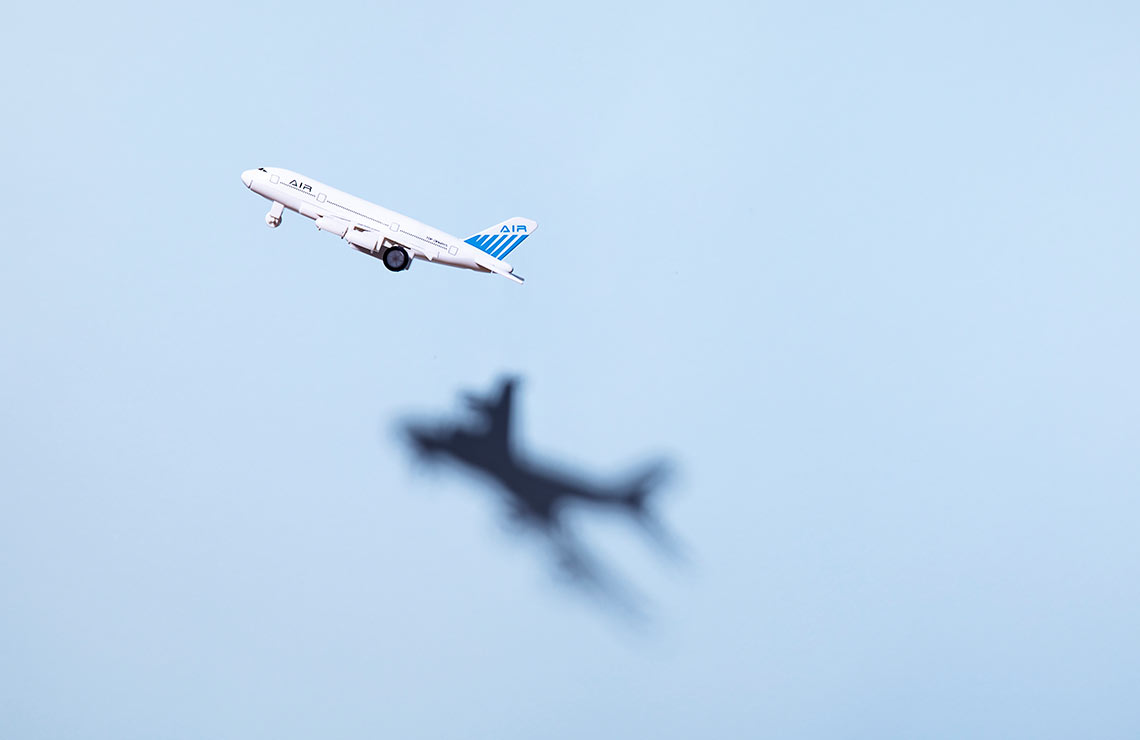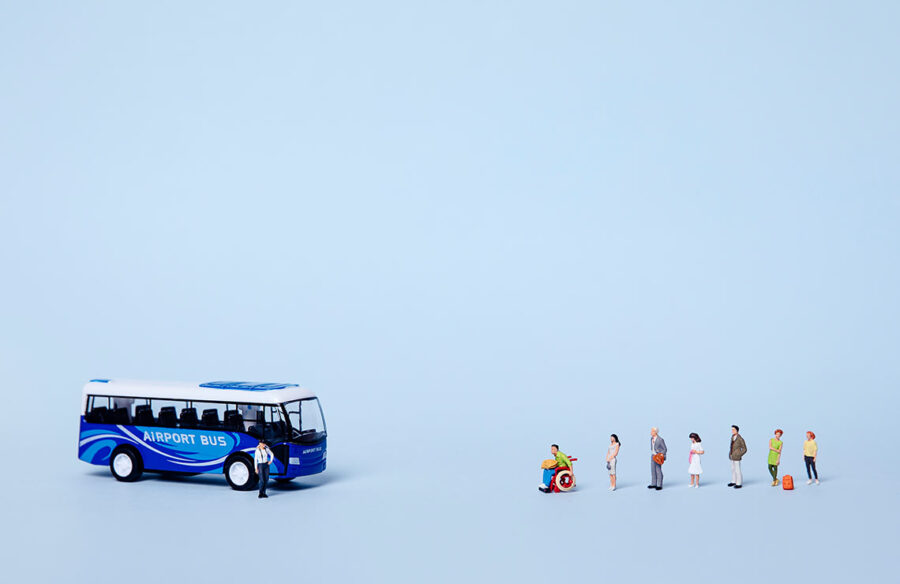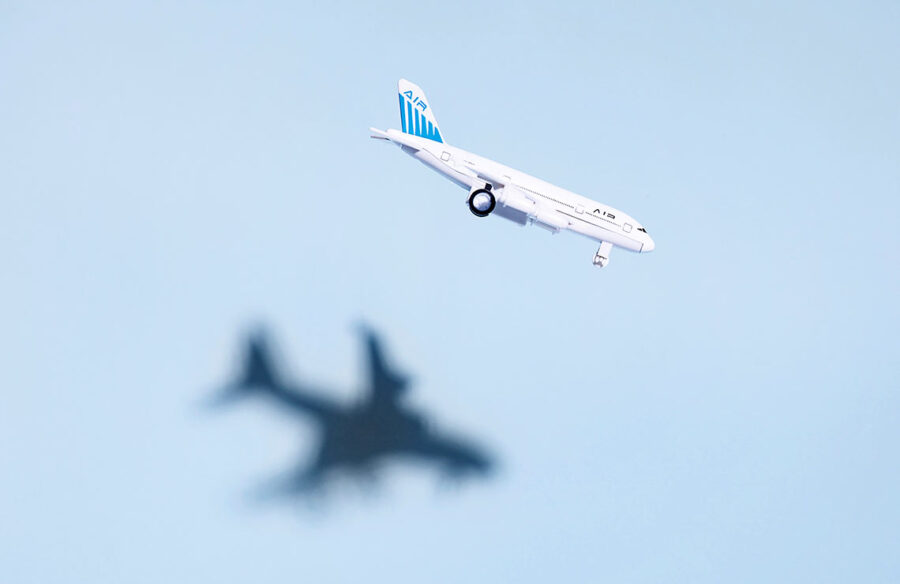
I believe it can fly
The world’s tech investors are turning their attention to electric planes; but are battery-powered engines enough to get airline companies up and flying again?
But first, let’s get the cultural reference out of the way: R. Kelly believed he could fly, and for a while he did. But he flew too high and ended up a dark hole he won’t be coming out of any time soon. Many of the companies which are currently flying high on promises of electric planes will suffer a similar fate.
Electric aircraft may seem a long way off right now, but things can move fast in the world of technology. No one could envisage a world without air travel, either.
A life-threatening virus and closed national borders knocked the wind out of the airlines. Some of them hit the canvas, while others clung to the ropes and tried to stay on their feet despite feeling groggy and confused. Their revenue streams were cut off, and no matter where you build your levee, water will always find a way. Virtual meetings and advanced presentation tools aren’t actually that new, but the pandemic struck at the same time as these technologies matured. Bit rates have now become good enough, so public and private enterprises – and people generally – were now forced to take a giant leap into a new reality, with communication technology which otherwise would have been lightyears away. They discovered that in most cases they didn’t need to fly at all.
And then came the reports concluding that we should do whatever we could to avoid flying.
Several alarming climate reports from the UN are causing passengers to lose sleep at the mere thought of helping the airlines to stay afloat.
A negligible proportion of the world’s population flies frequently, yet air traffic accounts for around 2.4 percent of carbon dioxide (CO2) emissions. On top of that comes emissions of nitrous oxides, sulphur dioxide, carbon monoxide and soot. An EU report from the end of 2020 confirms that the combined impact of these emissions is at least as serious for the climate as the CO2 emissions alone.
Some airlines are trying to put lipstick on a pig by bragging how fuel-efficient their planes are.
Some airlines are trying to put lipstick on a pig by bragging how fuel-efficient their planes are. And to some extent they’re right; modern passenger planes use way less fuel than they did 20 years ago. But they still use a lot of fuel. And before the virus took off in Wuhan, people travelled way more than they did back then. So, emissions have not dropped over time; they’ve risen dramatically.
Everyone realises that the aviation industry needs to cut its emissions – for moral as well as economic reasons. Many countries have now adopted political strategies to dramatically cut emissions from air traffic in the coming decades. The first airline to offer passengers a climate-friendly, quiet plane – and a good conscience – will laugh all the way to the bank. You only have to look at the auto industry. Part of the reason why investors have money burning a hole in their pockets is that they missed out on Tesla.
A wonderful experience
It just so happens that, at the time of writing, I’m driving a Tesla all over Italy. There are still very few electric vehicles here (and the further south you go, the fewer you see), and the Model S, which is now a common family car in Norway, attracts as much “attenzione” in Italy as a Lamborghini Aventador. Besides, it’s a wonderful experience to move silently through the vineyards with the top down in the low yellow light before darkness falls. And the absence of a cloud of exhaust fumes trailing behind me makes it all the more beautiful.
The future of the auto industry is electric. There’s no doubt about it. Even the present is electric. But somewhere in the mountains in Abruzzo I discovered an uncomfortable truth: the amazing power of an internal combustion engine. There are still some areas where the electric vehicle is outdone: with a petrol-powered car I could have avoided spending endless hours at charging stations; I could have chosen other routes; and I could have driven to out-of-the-way places that lie far beyond the reach of any charging station. I would have avoided having a tiny heart attack from having just about enough battery power to reach a charger but making a wrong turn at a traffic circle and ending up on a freeway heading in the wrong direction.
But things could have been worse. I could have been flying a plane.
Here’s my theory: the further you are from the ground, the greater your range anxiety. If my Tesla runs out of power on a roadside somewhere in Tuscany, theoretically I’ll have time to down a bistecca and glass of a decent Brunello while I wait for roadside assistance. If a plane runs out of power at 20,000 feet, theoretically I’ll have time to say a short prayer before it’s all definitively over.
The apparently insurmountable problem is that the need for more battery capacity increases exponentially with the distance from the ground. Moving a plane carrying cargo and passengers from one place to another demands a colossal amount of energy.
Heavy as lead
In an ideal world, the airlines would simply have replaced the fuel engines in an already approved plane. It would be faster, cheaper and simpler than going all the way back to the drawing board. But it’s not that simple. Electric engines require batteries which (currently) are as heavy as lead. A plane that is approved with an engine weighing, let’s say, one ton with a full fuel tank, would not be able to fly with an electric engine that weighed ten tons with batteries. So, to reduce the weight, you would need to reduce the battery capacity – and consequently the range.
This is what’s giving the industry its biggest headache right now. If enough batteries were crammed into a Boeing 737 to make it possible to fly from London to New York, the plane would be so heavy that it would sink into the runway rather than take off from it. Nor would there be any space for passengers or cargo, which would make the whole exercise pointless anyway.
Big electric passenger planes will therefore not be a reality until the batteries are made considerably smaller and more efficient. We will get there sooner or later, but even the developers says we’re at least a couple of decades away – unless, that is, stopping over 30 times between Stockholm and Rome becomes a viable business model. But this doesn’t mean that electric planes are a bad idea.
Some of these developers may well succeed, but many will be kept afloat by tall tales and naive investors
Loads of companies are now working on developing electric aircraft. Tiny helicopter-like vehicles that can be used as taxis or delivery vehicles are generating the most hype. Many of them look ultra-cool, resembling the futuristic drawings we did in elementary school in the 1980s, with people wearing silver clothes, eating pills instead of food and whizzing around with jet packs and flying cars.
Some of these developers may well succeed, but many will be kept afloat by tall tales and naive investors. Many have already failed, and more will follow. The most exciting and promising developments are happening in the more conventional part of the aviation industry. Only once passenger planes become electric will they really take off.
Two trends stand out
SAS is collaborating with Airbus, United with Swedish startup Heart, and Easyjet with the American startup Wright Electric, and so on. Most of the airlines are desperate to get an electric plane into the air because it could prove profitable – and sooner than you might expect.
If you compare today’s aviation industry with that of the 1980s, two trends stand out:
- The regional airports are increasingly underused.
- The airlines are flying bigger planes with more seats.
These trends are driven by the fact that the cost of buying and maintaining an aircraft engine is roughly the same regardless of size and trip distance. This makes small passenger aircraft for short routes less profitable. In the 1980s, the average number of seats on regional flights was 20, whereas today it’s 80.
This does not necessarily favour the interests of passengers; they have to spend more time and money on reaching the large airports, they depart from somewhere far from home and land somewhere far from their final destination, and do so in huge, noisy and polluting planes.
Regional flight might be profitable
Investors and founders of companies like Heart and Eviation in Israel claim that the cost of buying and maintaining an electric engine is a fraction of the same cost for a fuel engine, and that electrification can therefore make regional flights using small aircraft profitable again.
In September Rolls-Royce completed a successful 15-minute flight test in “Spirit of Innovation”, an all-electric aircraft in the south of England. The aircraft only has one seat, but the experience gained will be used to develop a passenger aircraft.
Tecnam in Italy is hoping to have an all-electric aircraft with a capacity for nine passengers in the air in 2026, complete with a Rolls-Royce engine. Norway’s Widerøe has shown an interest, since a large proportion of its flights cover short distances in northern Norway. The range at the time of launch will be around 200 kilometres. Heart Aerospace, which is based outside Gothenburg in Sweden, is working on an electric plane for 19 passengers. The range at the time of launch will be 400 kilometres.
Sceptics would dismiss these performance properties as ridiculous compared to fuel aircraft, in terms of both passenger capacity and range. But here’s the interesting part: 400 kilometres is enough to cover around 80 percent of the routes in markets like those in the Scandinavian countries. Other interesting markets for this type of aircraft include island-hopping in countries like Indonesia, Greece, Japan and the Philippines, or indeed any country with mountain ranges or lakes that take a long time to traverse. Or for moving troops and crews. Air ambulance services. You name it.
This summer, the American airline company United placed an order for 100 of these aircraft with Heart.
Severe economic impact
It’s happening now … or soon will be, at least.
As we know, the aviation industry was hit hard by the coronavirus pandemic in 2020. Few people wanted to travel, and those who did were not allowed. The airlines’ revenue streams dried up, and orders for new aircraft and engines were cancelled.
The economic impacts were severe. Rolls-Royce lost 4.5 billion USD in 2020, and had to cut around 7,000 jobs to save money as well as make some tough priorities in other parts of its operations. This will likely delay deliveries of new engines by several years, which in turn may create delays for Tecnam and Widerøe. So the chances of sitting in an electric plane any time soon are slim, though it may well be a reality by 2030.
In the meantime, see you on Teams.

Joacim Lund
Technology commentator, Aftenposten
Years in Schibsted: 16

